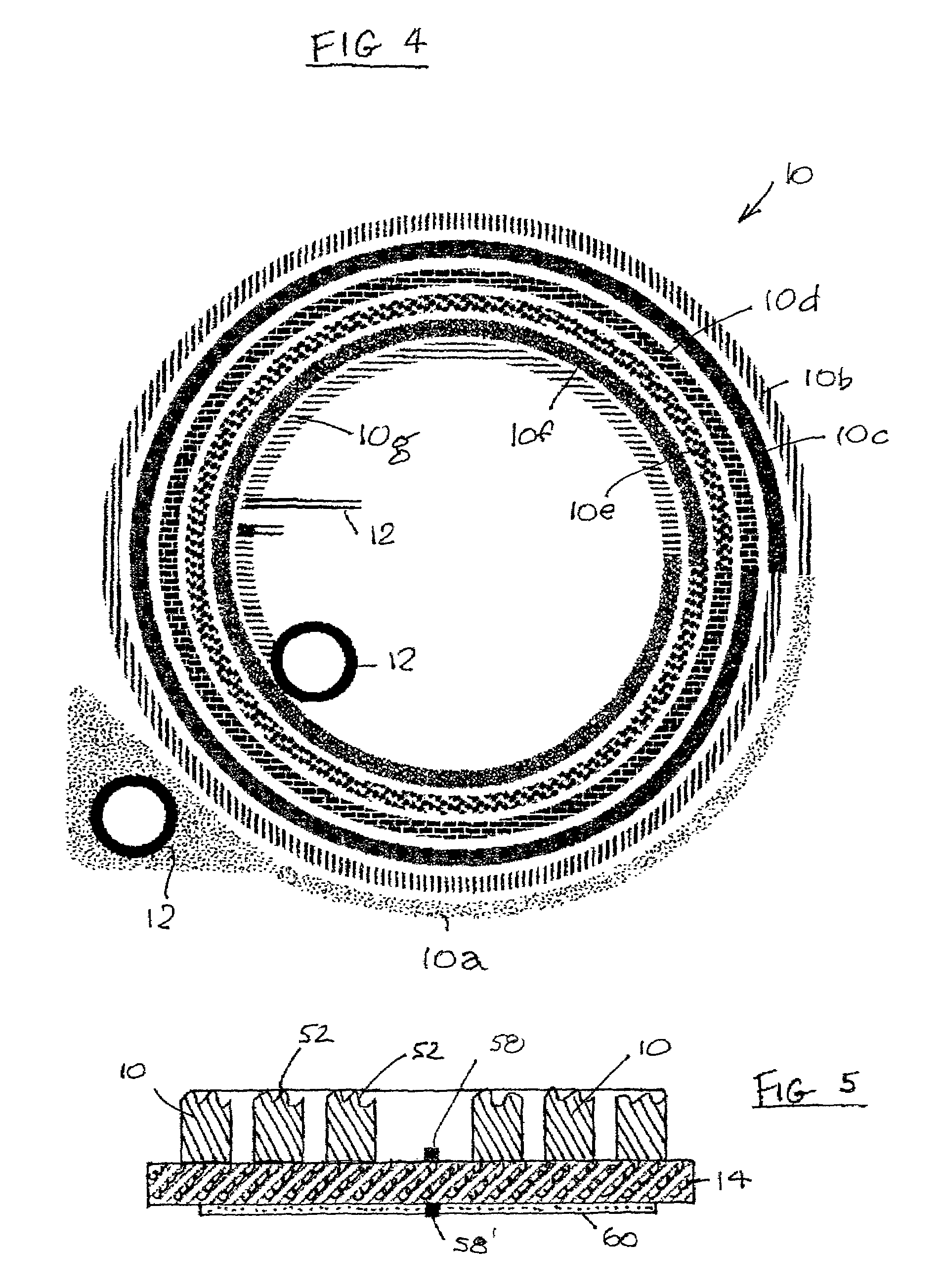Method for the formation of RF antennas by demetallizing
a technology of rf antennas and demetallization, applied in the field of radio frequency tagging, can solve the problems of limiting the range of applications of the known system, unable to provide for the production of antennas of varying densities, and less flexible tags or labels, and achieve the effect of thin, flexible tags
- Summary
- Abstract
- Description
- Claims
- Application Information
AI Technical Summary
Benefits of technology
Problems solved by technology
Method used
Image
Examples
Embodiment Construction
[0032]The invention is best understood by reference to the drawings. In the basic process of this invention, a film or paper web, which may or may not contain preprinted or embossed images upon it, and which is metallized on one or both sides, is sent through a demetallization process on a printing press to create RF antenna(s) on one or both sides of the web.
[0033]FIG. 1 is a plan view of a radio frequency (RF) antenna 10 which contains junction areas 12 for connection to conventional RF antenna circuitry. FIG. 2 is a plan view of the RF antenna 10 of FIG. 1 tag formed by demetallization on the surface of a substrate 14, in the manner to be described below. The substrate 14 will be a paper or film web and which contains a metallized layer 16 (see FIG. 7) on one or both sides, from which the RF antenna(s) are formed. The combination of the web and the antenna(s) can be used for conventional RF tags or labels. The metal 16 used for metallization of the web material can be aluminum, c...
PUM
| Property | Measurement | Unit |
|---|---|---|
| thickness | aaaaa | aaaaa |
| thickness | aaaaa | aaaaa |
| thickness | aaaaa | aaaaa |
Abstract
Description
Claims
Application Information
 Login to View More
Login to View More - R&D
- Intellectual Property
- Life Sciences
- Materials
- Tech Scout
- Unparalleled Data Quality
- Higher Quality Content
- 60% Fewer Hallucinations
Browse by: Latest US Patents, China's latest patents, Technical Efficacy Thesaurus, Application Domain, Technology Topic, Popular Technical Reports.
© 2025 PatSnap. All rights reserved.Legal|Privacy policy|Modern Slavery Act Transparency Statement|Sitemap|About US| Contact US: help@patsnap.com



